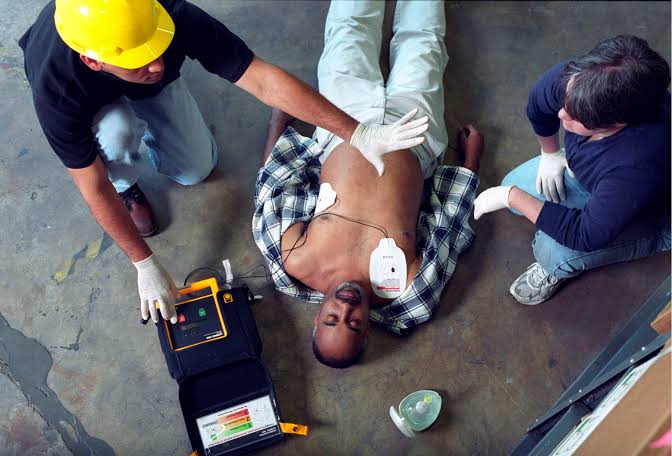In today’s fast-paced and dynamic work environments, ensuring the safety and well-being of employees is paramount. Comprehensive first aid training is one of the most effective ways to enhance workplace safety.
This training equips employees with the knowledge and skills to respond promptly and efficiently to medical emergencies. In this blog post, we will explore the importance of a first aid course in the workplace, its benefits, and how it can be implemented effectively.
The Importance of First Aid Training
Immediate Response to Emergencies
Workplace accidents can occur at any time, often when least expected. Having employees who are trained in first aid can significantly improve the outcome of these incidents. Immediate response to injuries or medical conditions can prevent the situation from worsening. For instance, knowing how to perform CPR or how to treat a wound can save a life or reduce the severity of an injury until professional medical help arrives.
Reducing the Severity of Injuries
Prompt and proper first aid can minimize the extent of injuries. For example, knowing the correct first aid procedures can reduce the damage to the skin and underlying tissues in the case of burns. Similarly, timely intervention in cases of sprains, fractures, or cuts can prevent complications and promote faster recovery.
Creating a Safer Work Environment
First aid training promotes a culture of safety within the workplace. When employees are aware of the potential risks and know how to handle emergencies, they are more likely to take precautions to avoid accidents. This awareness extends beyond the immediate work environment, encouraging safer behavior both at work and at home.
Legal and Ethical Responsibility
Employers have a legal and ethical responsibility to provide a safe working environment. In many countries, workplace health and safety regulations mandate that businesses must have adequate first aid measures in place. Failure to comply with these regulations can result in legal consequences and damage to the company’s reputation.
Benefits of First Aid Training
Enhanced Employee Confidence
Employees who are trained in first aid feel more confident in their ability to handle emergencies. This confidence can reduce panic and ensure a more organized and effective response during critical situations. Knowing that they can make a difference boosts their morale and job satisfaction.
Reduced Workplace Accidents
First aid training often includes information on how to prevent accidents in the first place. Employees become more aware of potential hazards and learn how to mitigate them. This proactive approach can lead to a reduction in workplace accidents and injuries, contributing to a safer and more productive work environment.
Faster Recovery Times
When injuries do occur, immediate first aid can lead to faster recovery times. Quick and appropriate treatment can prevent minor injuries from becoming major ones, reducing the time employees need to take off work for recovery. This not only benefits the injured employee but also minimizes disruption to the workplace.
Cost Savings for the Company
Workplace injuries can be costly for businesses. They can lead to lost productivity, increased insurance premiums, and potential legal costs. By investing in first aid training, companies can reduce the incidence and severity of workplace injuries, leading to significant cost savings over time.
Improved Team Cohesion
First aid training often involves team-based exercises and scenarios. These activities can improve communication and collaboration among employees, fostering a sense of teamwork and mutual support. When employees know they can rely on each other in emergencies, it strengthens the overall cohesion and spirit of the team.
Implementing First Aid Training in the Workplace
Assessing Workplace Risks
The first step in implementing first aid training is to conduct a thorough assessment of workplace risks. Identify the potential hazards specific to your industry and work environment. This assessment will help determine the level of training required and the types of first aid measures that should be in place.
Choosing the Right Training Program
Select a first aid training program that is appropriate for your workplace. There are various levels of training available, ranging from basic first aid to advanced medical response. Ensure that the program is certified and conducted by qualified instructors. Some programs offer industry-specific training, which is particularly beneficial.
Scheduling Regular Training Sessions
First aid skills can become rusty over time, so it is essential to schedule regular training sessions to keep employees’ knowledge and skills up to date. Annual refresher courses can help reinforce the training and ensure that employees remain confident in their ability to respond to emergencies.
Providing Accessible First Aid Kits
Ensure that well-stocked first aid kits are easily accessible throughout the workplace. The contents of these kits should be tailored to the specific risks identified in the workplace assessment. Regularly check and replenish the supplies to ensure they are always ready for use.
Promoting a Culture of Safety
Integrate first aid training into the broader workplace safety program to encourage a culture of safety. Promote awareness through posters, newsletters, and regular safety meetings. Encourage employees to report hazards and participate in safety initiatives.
Recognizing and Rewarding Safety Practices
Recognize and reward employees who demonstrate a commitment to safety and first aid practices. This could be through formal recognition programs, awards, or incentives. Positive reinforcement can motivate employees to take safety seriously and contribute to a safer workplace.
Real-Life Examples of First Aid Saving Lives
Case Study 1: Cardiac Arrest
In a manufacturing plant, an employee suffered a sudden cardiac arrest. Thanks to the first aid training provided, a colleague was able to perform CPR immediately while another retrieved the automated external defibrillator (AED). Their quick actions revived the employee, who was then taken to the hospital for further treatment. Without the first aid training, the outcome could have been fatal.
Case Study 2: Severe Bleeding
In an office setting, an employee accidentally cut their hand on a piece of broken glass. The cut was deep, and there was significant bleeding. A co-worker who had undergone first aid training quickly applied pressure to the wound and elevated the injured hand. They then used a sterile dressing from the first aid kit to bandage the cut. The injured employee was taken to the hospital, where the doctors commended the first aid actions for preventing severe blood loss and potential shock.
Conclusion
First aid training is an essential component of workplace safety. It empowers employees to respond effectively to medical emergencies, reduces the severity of injuries, and fosters a culture of safety. By investing in first aid training, businesses can enhance employee confidence, reduce workplace accidents, and achieve significant cost savings. Moreover, it is a legal and ethical responsibility of employers to ensure a safe working environment.
Implementing a robust first aid training program involves assessing workplace risks, choosing the right training program, scheduling regular sessions, providing accessible first aid kits, promoting a culture of safety, and recognizing safety practices. The benefits of first aid training extend beyond the workplace, creating a safer and more supportive community.
Stay in touch to get more updates & news on Tribunetribune!




